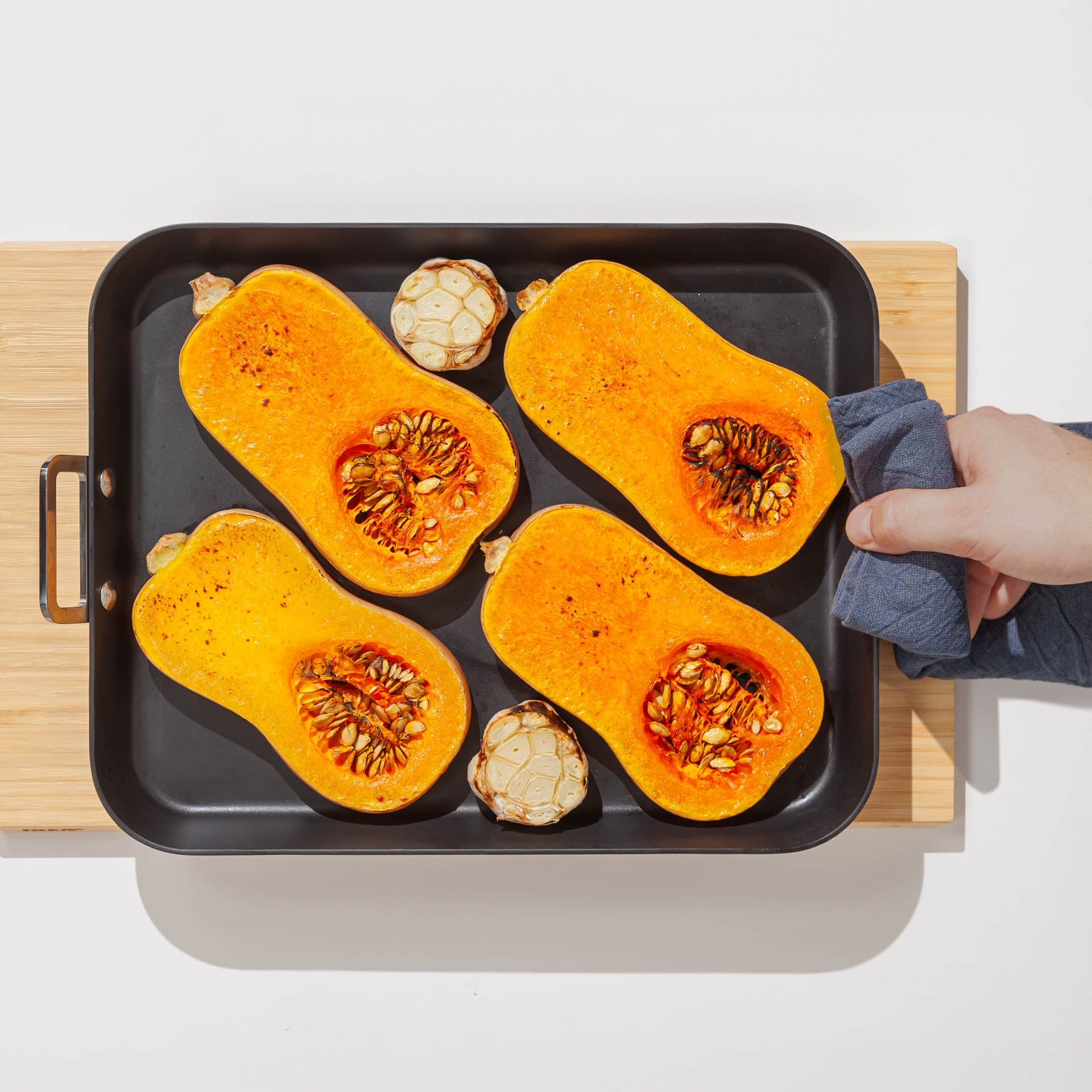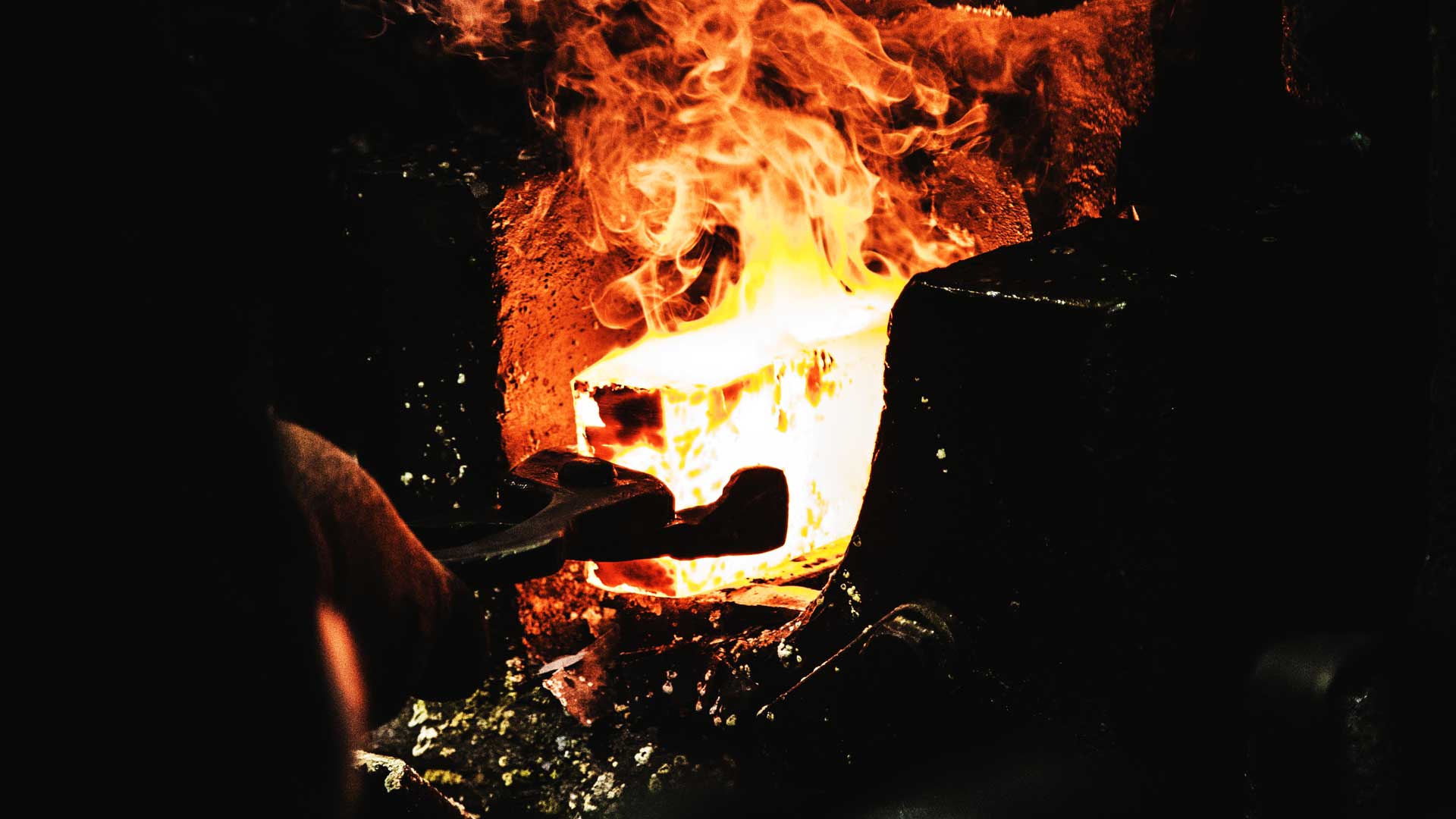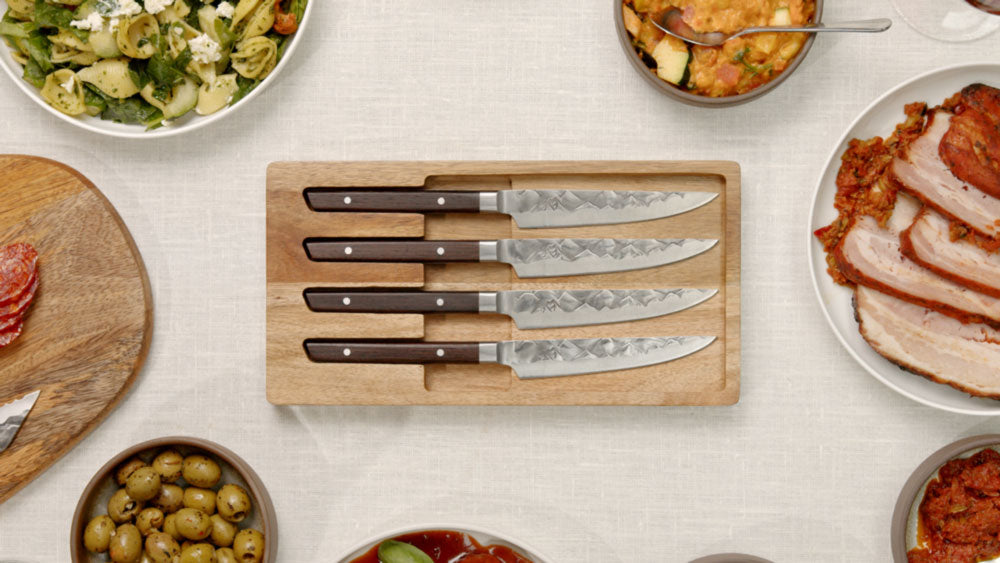Anyone who’s ever set foot in a specialty knife shop or even a specialty kitchen shop will know: there are a lot of different knives. In this post, we’ll go over the essential knife shapes. We hope to give you a sense of direction. What knife to choose for what? Let's understand the basic knife types from a functionality standpoint. Then we can look at more in-depth properties that define knives. Properties like steel type, hardness, and grind type.
Broadly speaking we distinguish two types of knives: standard and specialty. Standard knives are multi-purpose knives that can be used for a plethora of tasks. Specialty knives only have one purpose but are extremely efficient in that one purpose.
When choosing a knife you logically want to start with the knives that do the most. Like a Chef’s knife. This will give you the most value for money. Only after that, do you have your daily tasks covered you’ll want to expand into specialty single-purpose knives.
So what are the essentials? Let's start with the holy trinity of western knives.
1. CHEF'S KNIFE
The most versatile and popular of all knife types. The Chef’s knife has its name for good reason. This is the daily driver of any chef. The chef's knife can perform about 90% of tasks in a kitchen. Check out our detailed article on the things you can do with a Chef’s knife here.
2. PARING KNIFE
For smaller work like peeling or whittling vegetables, this is an indispensable addition to a Chef’s knife. We use it for all sorts of small cutting tasks, even dicing onions works well.
3. SERRATED KNIFE
Or the bread knife. Really only necessary for cutting hard-crusted bread. But since that task is so common and difficult without a bread knife we still consider a serrated knife to be essential. We would not recommend using a serrated knife for anything other than bread or pastries. A good serrated knife is long and tall. This keeps slices straight and allows you to efficiently saw through large loaves.
4. UTILITY KNIFE
Sometimes you need a delicate touch. The Utility knife is perfect for cutting fruit and breaking down vegetables. If a Chef’s knife seems bulky, it is time for the Utility knife. Great for cutting small vegetables or herbs.
From these three knives above we’d recommend branching out to include some Japanese-style knives. Here are a couple of solid basics.
5. SANTUKU
A very popularized shape. The santoku is slightly smaller than the Chef’s knife. It also has a straighter blade profile. As such it lends itself better for vegetables and chopping with an up-and-down-forward motion (vs the circular motion used with a Chef’s knife). This knife is almost as versatile as a Chef’s knife and could even be used as a replacement for it.
6. KIRITSUKE
One of our favorite knife shapes. A Kiritsuke is usually longer than a Chef’s knife. This is just a gorgeous knife type. The straight front, low point, and flat blade profile make this knife particularly suited for push chopping and for finely dicing herbs. The extra size over the Chef’s knife comes in handy when handling large products or when making even slices through fish or meat.
7. NAKIRI
A knife for greens. The nakiri has a straight cutting edge, allowing for a push-cut motion straight down to the cutting board. This knife is particularly suited for cutting vegetables into thin strips or slices. Subsequently, those slices can be stacked and cut into strips. The tip of this blade has a slight rounding that makes it easier to lift the handle up after chopping down. The rounded tip also helps the knife plunge-cut straight down into harder vegetables.
With the first 3 knives above 99% of your kitchen work can be done easily. The next 3 we would consider a luxury for the home cook. After that, we would recommend looking for specialty knives for those tasks that you find yourself doing frequently. We haven't covered boning knives, cleavers, steak knives, and many more. We’ll cover some specialty knife types in the next article.














Leave a comment
All comments are moderated before being published.
This site is protected by hCaptcha and the hCaptcha Privacy Policy and Terms of Service apply.